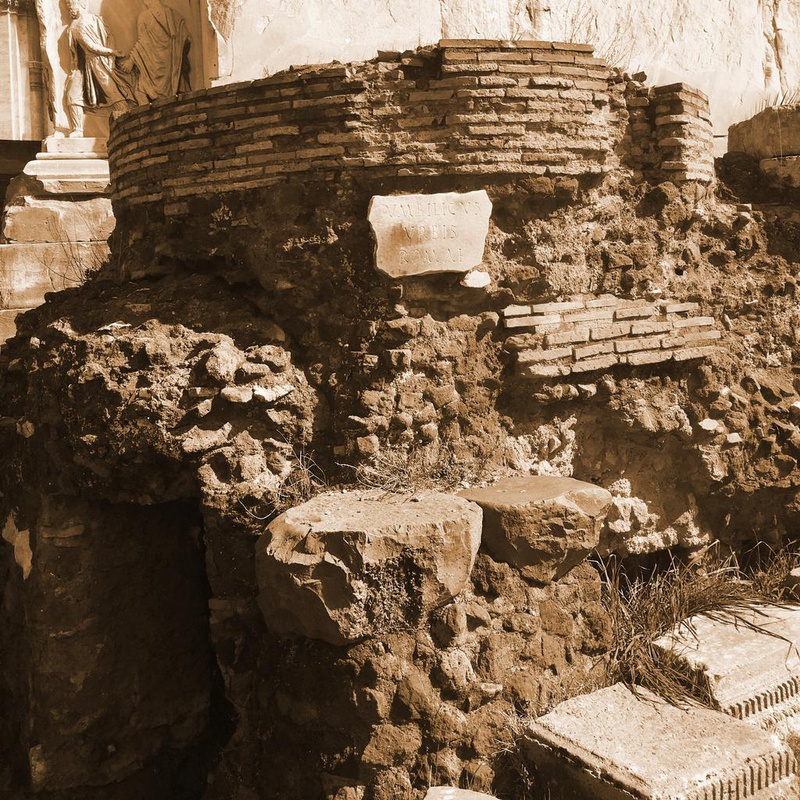Posted by Shazarch on 18 Mar 2021
Umbilicus Urbis Romae
Antiquity, Rome
Archaeological artifact
The Umbilicus Urbis Romae, known as the 'Navel of the City of Rome,' is a symbolic monument located in the Roman Forum. This conical brick structure represents the conceptual center of Rome, a city that, in its heyday, was considered the center of the world. Such monuments, capturing the essence of urban centers or the cosmos, were prevalent in Greek and Hellenistic cities. The term 'omphalos'—Greek for 'navel'—was used to refer to similar structures in cities like Delphi, Athens, and Antioch. The Umbilicus Urbis Romae's importance is underscored by its mention in the Constantinian Regionaries, an administrative guide listing it after the Temple of Concord. The eighth-century document by the Anonymous of Einsiedeln also cites it, noting its location near the Church of Saints Sergius and Bacchus. These references emphasize the monument's significance in Rome's urban landscape. Architecturally, the Umbilicus boasted a three-tiered design, with each level of the brick cone embellished with white and colored marble slabs. Historians have speculated that the pinnacle of the structure might have been graced with a column or statue, although conclusive evidence of this detail has yet to be found.
